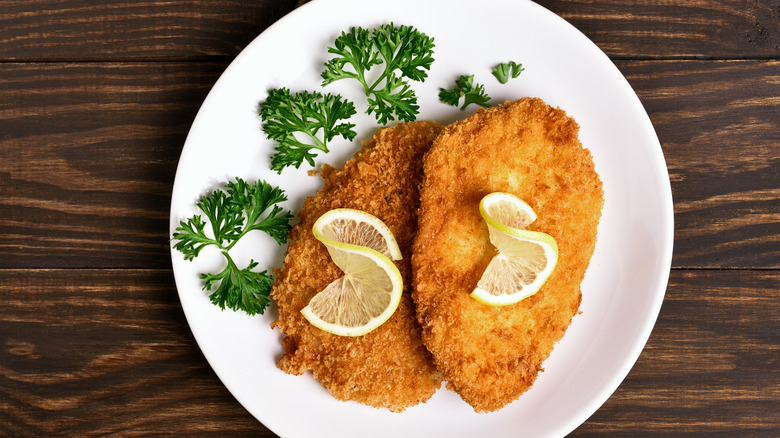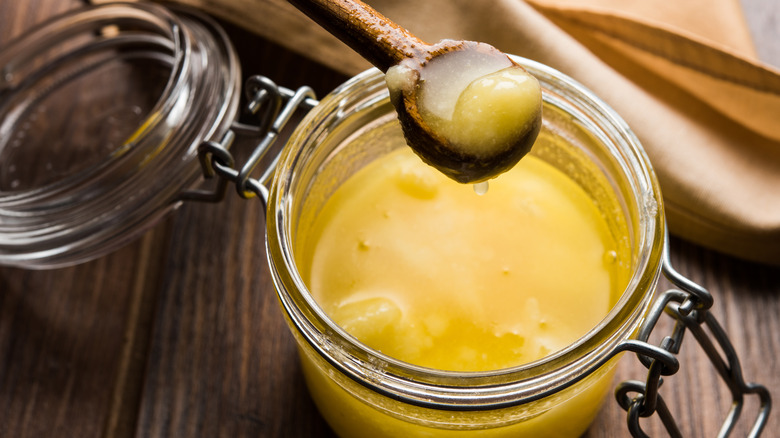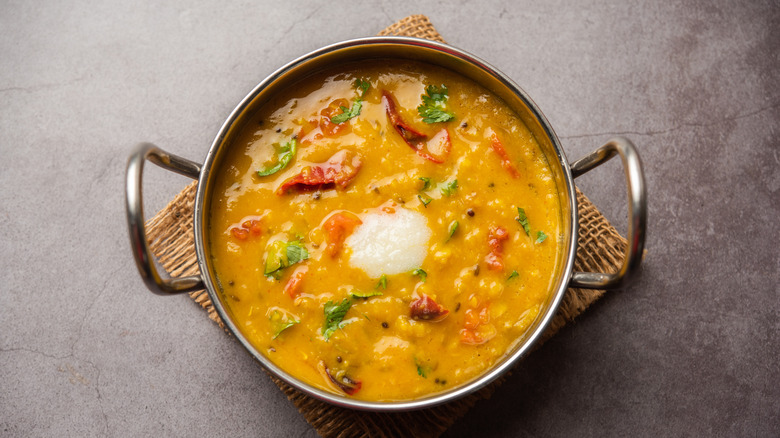The Absolute Best Fat For Fried Chicken Cutlets
At this point in human culinary history, we can reliably say that chicken is by far the most popular animal protein. According to The Cold Wire, chicken is more widely consumed and in higher demand than any other meat, with around 8 billion chickens eaten in the United States annually. Smithsonian Magazine explains that chickens have scratched their way into just about every world cuisine with their user-friendly taste and texture while The Cold Wire reminds us what we already know and love: It takes little effort to make chicken into a satisfying dish and even picky kids will readily eat it — and that's saying a lot.
But you could argue that chicken wouldn't have a place on our plates without fat. Every preparation, from fried chicken to a roast, depends on it. Yet, compared to the soaring popularity of chicken, fat has acquired a negative reputation. But recent research is proving that not only is fat not unhealthy in the context of a balanced lifestyle, it's actually quite good for you. Healthline reports that fat is just as necessary to humans as carbs and protein, providing a slow-burning source of energy and aiding in the absorption of vitamins and other processes in the body. Even saturated fats, such as butter and animal fat, are fine to enjoy in moderation and may not be as harmful as previously perceived, Healthline adds. So if fried chicken cutlets are the most basic way to cook the most user-friendly part of the chicken, then the choice of fat makes a big difference.
Clarified butter is key
There are two kinds of fats to know about first: unsaturated and saturated. Unsaturated fats (including omega-3s) are not made by the body and must be acquired through foods. Some cooking oils in this category include many seed, vegetable, and nut oils (per Healthline). But these fats have low smoke points and oxidize at high cooking temperatures, releasing damaging free radicals that could be bad for your fried chicken, and overall health (per Nuffield Health). Monounsaturated fats, like avocado and regular olive oil, are fine for frying, but they can be pricey and impart undesired flavor.
Healthline names a few healthy saturated fats, including coconut oil (which usually tastes like coconuts) and palm oil, which is questioned for its unsustainability, per World Wildlife Fund. However, cooking fat derived from grass-fed animals (raised on a pasture) may contain less overall fat and higher omega-3s, omega-6s, vitamins, and antioxidants than fat from animals raised on grain-based industrial diets, according to Mayo Health Library. Look for grass-fed beef tallow, pastured pork lard, and grass-fed butter.
Butter is usually not recommended because it burns. Fortunately, in places like India where cows are abundant, foodies have figured out that clarifying the butter yields an ingredient that's perfect for frying. According to MasterClass, clarified butter has its water and milk solids cooked out, with a resulting butterfat content of 99-100%. Ghee is a type of clarified butter that's simmered longer until its milk proteins caramelize somewhat before they're strained out, creating a desirable nutty flavor, MasterClass adds. Further cooking produces brown butter, and beyond that, you've burned the stuff.
How to fry chicken cutlets in clarified butter
It's as simple as heating your clarified butter up to a sizzle in a pan, and, in the meantime, breading your sliced boneless and skinless chicken breast with egg and breadcrumbs or your seasoned breading of choice (potato starch works wonders for crunchiness). Fry the cutlets until they're golden brown on each side, flipping them and ensuring that all parts of the meat get immersed in the hot butter. You'll wind up with meat that sports an irresistible, flavorful crust that plant-based oils just can't produce. Alton Brown recommends trying ghee with popcorn and steak.
There are other reasons to start cooking with clarified butter. MasterClass explains that since the milk proteins are cooked out of the butter during the clarification process, there's nothing left to burn. This makes clarified butter perfect for high-temperature cooking, increases its longevity, and, as MasterClass reports, is easier to stomach for people with lactose intolerance. You can buy ghee at many grocery stores or make clarified butter yourself at home for cheaper than you can buy many specialty gourmet oils. Then you'll have it on hand to make other fried dishes and traditional Indian dishes that call for it. When it comes to which cooking fat to use, the choice is clear: or at least clarified.


